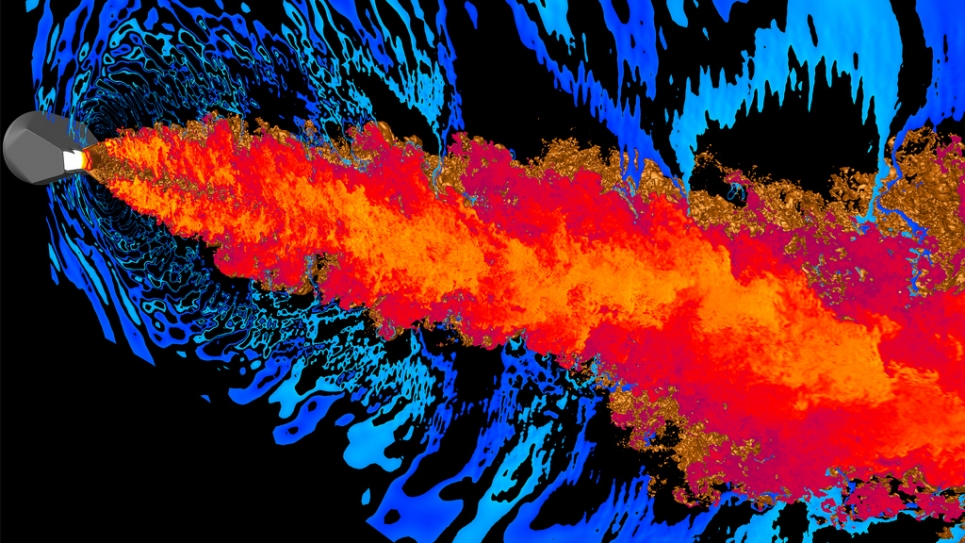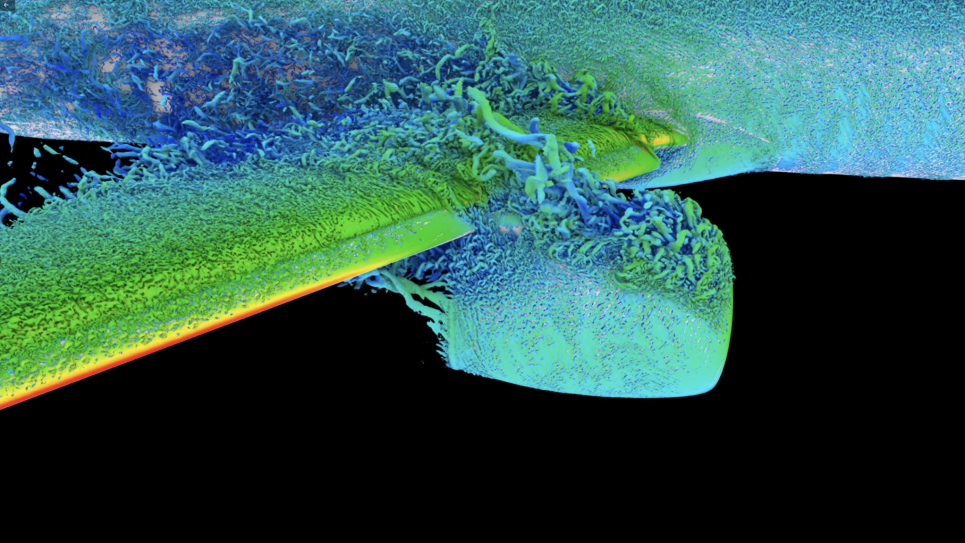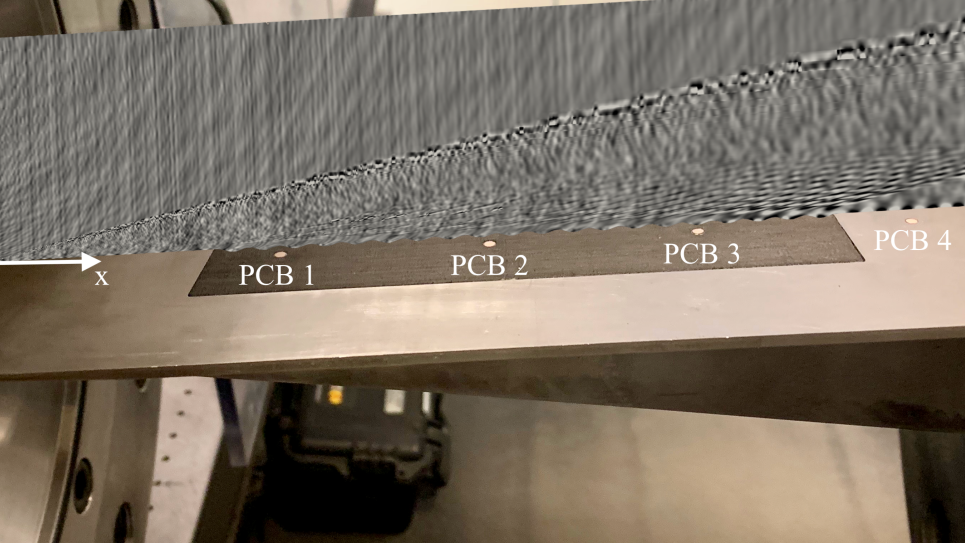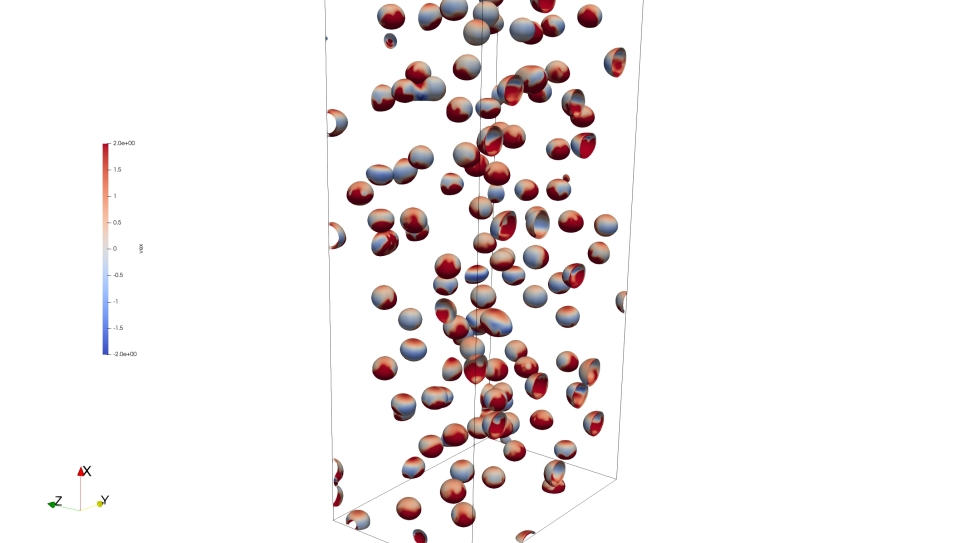
Wall Modeling and Primary Atomization for Predictive Large-Eddy Simulation of Airframes, Jet Engines and Jet Noise
Predictive large-eddy simulation (LES) of realistic high Reynolds number (high speed) flows is critical to engineering analysis and design of aerospace systems including, airplanes, jet engines, fuel injectors and turbines. This project will address two key challenges in LES of high speed flows: wall modeling of turbulent boundary layers and primary atomization of liquid jets. Four high-risk, high-payoff simulations will be developed that leverage the ‘CharLes’ codebase to significantly advance the state-of-the-art in LES technology by solution of (i) a full airframe wing/body high-lift system, (ii) a three-dimensional, transiently stalled diffuser, (iii) complex geometry supersonic jet nozzle with turbulent inflow and (iv) primary breakup of turbulent liquid jets in crossflow. The anticipated results of this research are (i) the first ever LES of the benchmark NASA Trap Wing with validation against both wind tunnel tests and data from the 2010 AIAA High Lift Prediction Workshop, (ii) LES of a stalled diffuser using a novel and more accurate modeling approach, (iii) a new understanding of how to model the flow inside complex geometry nozzles and its effects on the nozzle-exit boundary layer, the jet exhaust and ultimately the aeroacoustic field, and (iv) verification and validation of a new two-phase flow predictive algorithm. The results will improve the realism of simulations for high speed flows and further enable next-generation engineering of energy efficient and environmentally sound advanced technology devices.


